Glass eel migration up Plymouth Town Brook a sight to see outside the Plimoth Grist Mill
PLYMOUTH – Move over herring; American eels are making a seasonal run as the wiggly darlings of local rivers and streams.
The slippery fish have been making their way up Town Brook this month in record numbers and are getting an assist in their migratory habits from the town’s natural resources officers.
An eel ladder installed by the town in 2019 is credited with enabling tens of thousands of the creatures to make their way into the brook’s upper watershed, where they will spend the next decade or two slithering under rocks and in the mud.
Much like the herring that run up Town Brook every spring, the eels are enjoying popularity among visitors to the brook, who marvel at the annual migration upstream. To watch their progress observers have to look a little closer.
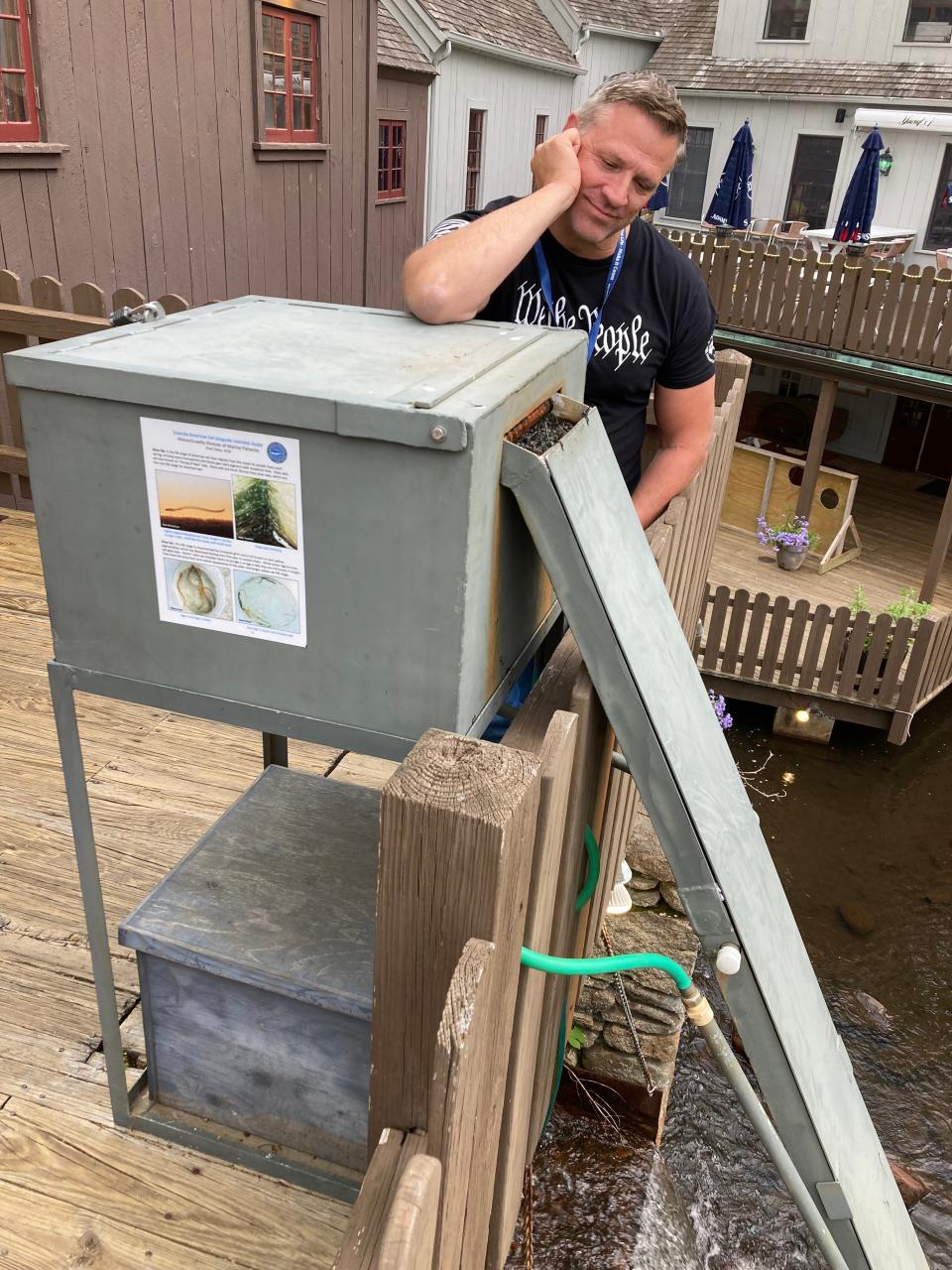
More: Herring return to Plymouth
More: A shore sign of spring: Plymouth readies for annual return of osprey
It unfolds outside the Plimoth Grist Mill, Plimoth Patuxet museum’s reconstruction of the Plymouth Colonists’ original 1636 mill on Town Brook.
At the base of the dam forming Jenney Pond, the town has installed the ladder, like the nearby fish ladder for herring, enables eels to continue their journey upstream.
Recently a group of visitors from Virginia took in the spectacle .
“Every so often you see one slither by,” John Telfer of Chesapeake, Virginia, said while watching the two-inch eels wiggle they way over the lip of the ladder. “It’s amazing all the work they do.”
Tour guide Lisa Strong saw a bird perch on the top of the ladder to gobble up the eels on their climb. “Free lunch, Plymouth’s welfare for the birds,” she said.
Record breaking
On that one day, more than 20,000 young eels made their way up the ramp and into a small collection pool, where resource officers counted them and gave the squirming creatures a lift over the dam into the pond and the watershed beyond.
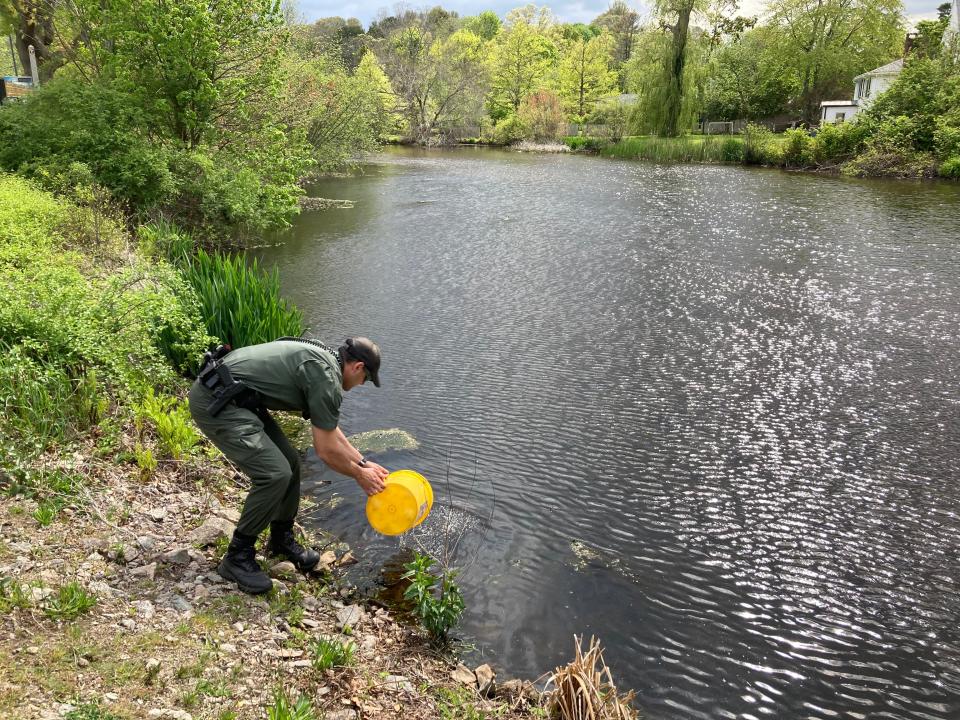
The one-day total is more than double the amount of eels recorded at Town Brook in all of 2020 and almost half the number from last year. As of last week, 39,000 eels had made their way up the ladder and across the dam.
The town started counting the eels in 2019, when the ladder was installed.
Before then, young eels would try to make their way upstream any way they could.
David Gould, the town’s director of marine and environmental affairs, said handfuls could be pulled from the stonework of the dam. The flow of water through the fish ladder used by herring is too swift for the little eels.
But the eel ladder works amazingly well. Located near the 14-foot diameter waterwheel, the slim metal ramp contains a fabric mesh that Gould compares to a convoluted mess of dental floss. Young eels who find the base are able to squirm up the mesh and dump into a transparent collection tank of water.
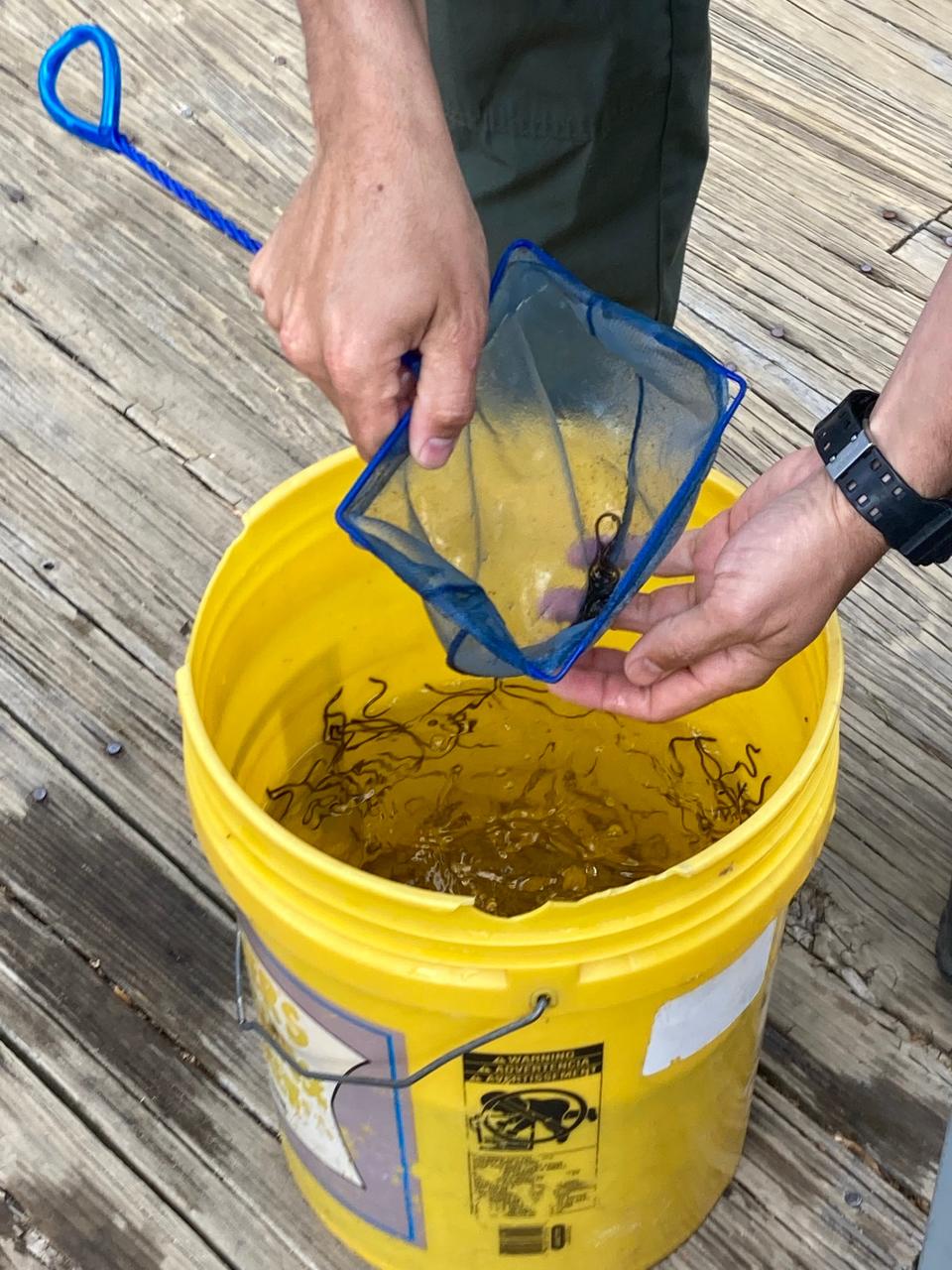
Early in the migration, resource officers count the eels individually. But on days like last Tuesday, when they had to empty the tank five times, they make an estimate based on sheer volume.
In 2019, the town recorded 63,960 eels through the ladder. Their number declined to just 7,796 in 2020. Last year, the town counted 44,894 eels.
Gould said this week’s full-moon tides are believed to be the driving force behind the timing of the migration, but little is known about the lifecycle of eels.
Eels spawn at sea but live in fresh water – the exact opposite of herring.
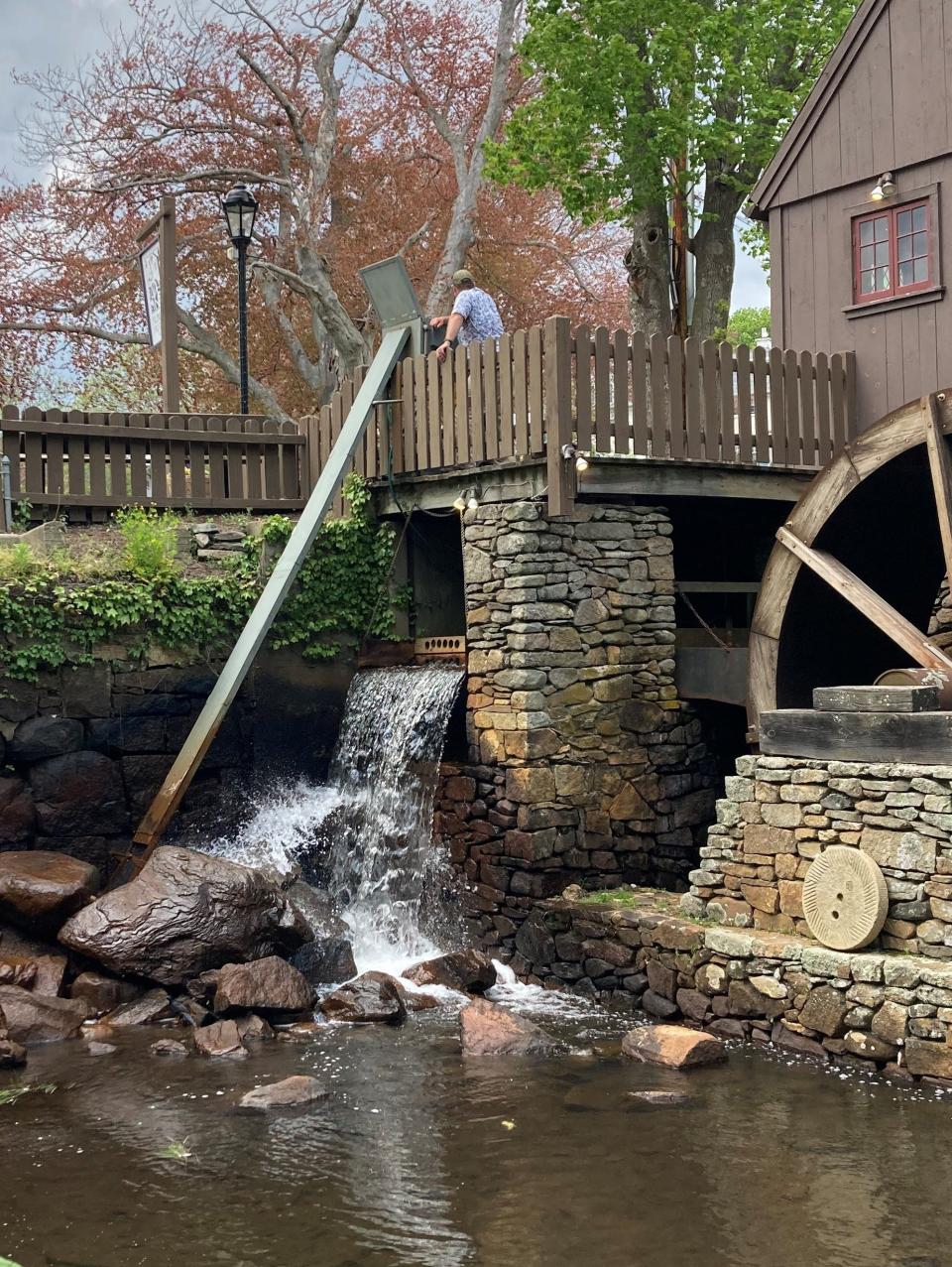
Sargasso Sea spawning grounds
Eels spawn in a section of the Atlantic Ocean known as the Sargasso Sea, the area known as the Bermuda Triangle. But even with modern equipment and techniques, researchers have had trouble documenting the phenomenon.
European and American eels spawn in the same place, but American eels – identified by their 107 vertebrae – make their way on the tides to estuaries on the east coast in North America. European eels, with 114 vertebrae, make their way to Europe.
Glass eels are about a year old and are translucent. Elvers are a little older and a little bigger, have pigmentation and are a precious commodity.
Prized as food, especially in Asia, when they reach adulthood, elvers are raised in fish farms and sell for about $2,200 a pound. The only legal fisheries in America are in Maine and South Carolina.
Gould said his resource officers sometimes find evidence of people trying to poach elvers in Town Brook and other rivers and streams. They monitor the watersheds and occasionally find and destroy elver nets.
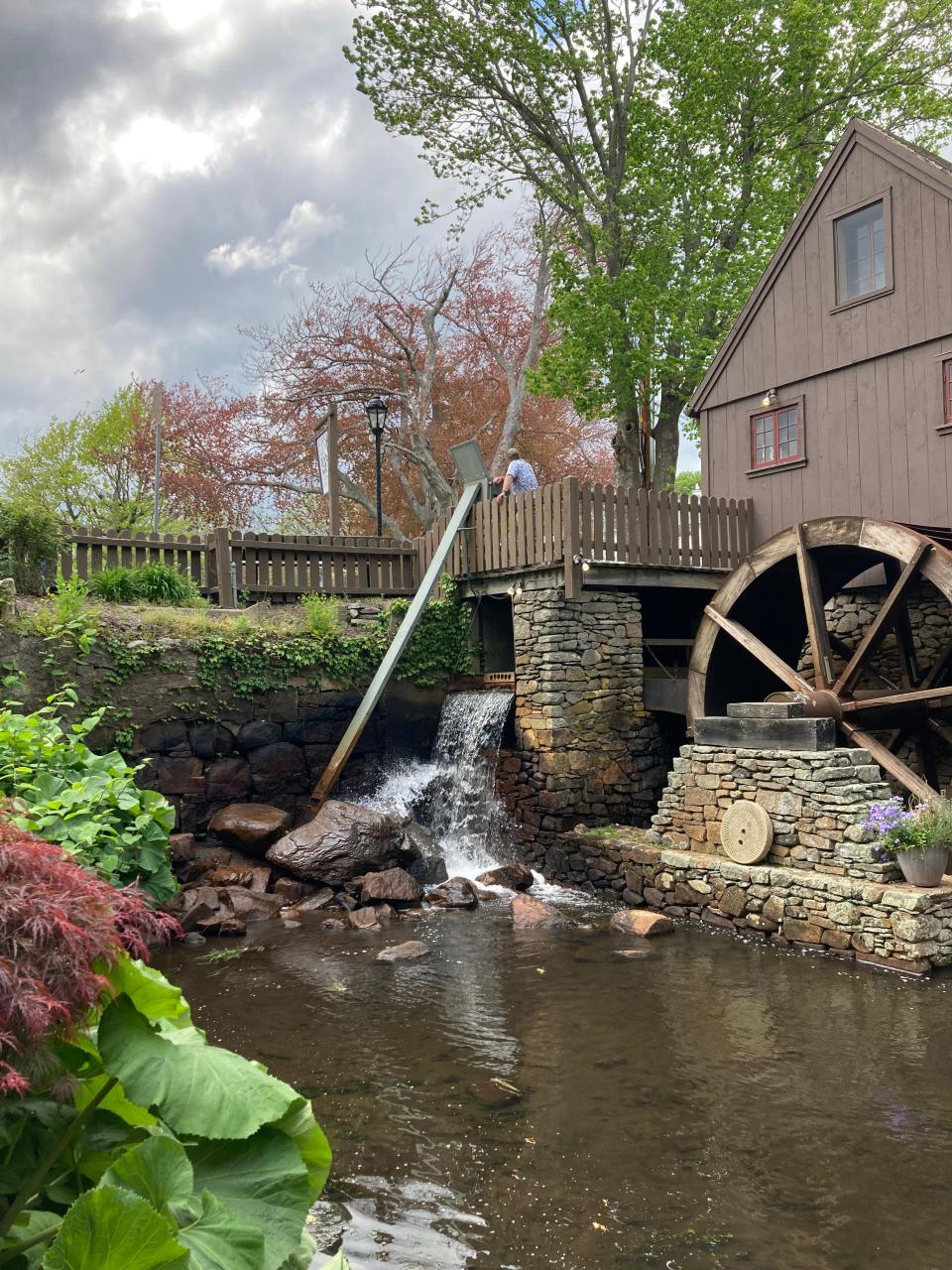
The elvers that make it up the ladder and into the collection bin get a free lift across Spring Lane to Jenney Pond, where they can settle or continue their trip upstream.
Gould said the mature yellow eels live for 10 to 20 years in the watershed, until they reached reproductive maturity. Then known as silver eels, they make their way downstream and back to the Sargasso Sea, where the cycle resumes.
The upstream migration generally coincides with the annual herring run, but can start earlier and end later.
Visitors can watch it happen from the deck outside the grist mill. On one side is the fish ladder. On the other is the eel ladder.
This article originally appeared on wickedlocal.com: Eels and escalators: Glass eels run up ladder on Plymouth Town Brook

